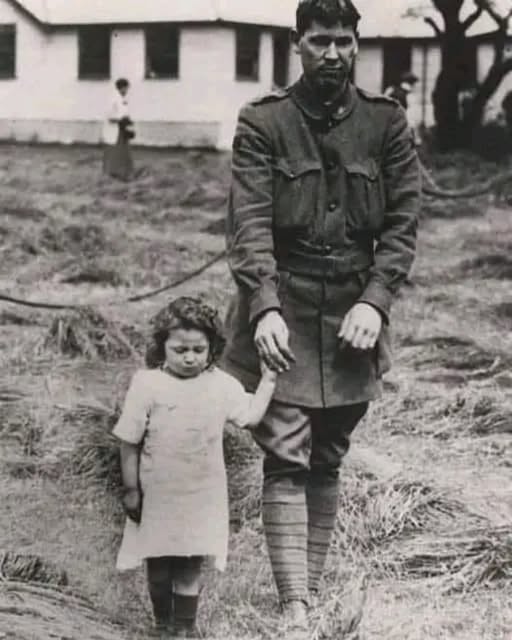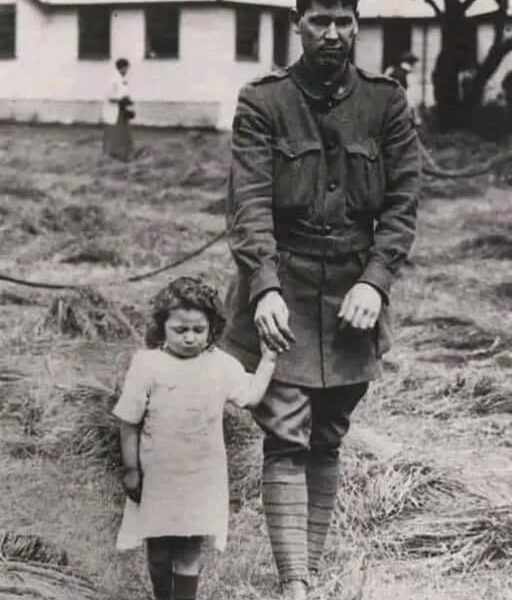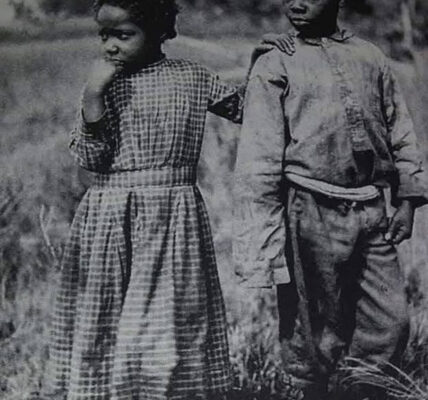The photograph is faded now, its edges softened by time. But the story it tells remains as vivid and powerful as ever. The little girl in that picture is Ruby Crane—a child who, though barely old enough to understand the weight of war, carried a light that guided men who had lost so much.

It was during the dark days of the First World War that Ruby’s journey began. She was only three years old when she first wandered the gardens of St. Dunstan’s in Brighton, Sussex—a rehabilitation centre for soldiers who had returned from the front lines blinded by battle. Her father worked there as the head gardener, and Ruby spent her days exploring the grounds, surrounded by men whose lives had been forever changed by war.
Ruby was just a child, but she understood something important: these men could not see. And so, with all the innocence and courage of youth, she began to take their hands.
A Child’s Touch
The soldiers, many still young themselves, had lost not just their sight but also a part of their future. The days at St. Dunstan’s were filled with routine—lessons in braille, training in new skills, attempts to rebuild lives shattered by the trenches. Yet into that routine came Ruby, with her tiny hand and her big heart.
She would approach them without hesitation, slip her hand into theirs, and ask softly, “Where would you like to go?” Whether it was to a workshop, a classroom, or simply a quiet corner of the garden, Ruby would guide them there.
Her hand was small—so small compared to the rough, calloused hands of men who had held rifles, dug trenches, and survived shells. But to the soldiers, her hand meant something no one else could give: warmth, innocence, and a reminder that the world still held kindness.
“They were so pleased to have a child come and talk to them,” Ruby later recalled, decades after those early days. “It was something different, away from the monotonous grind of not being able to see things, I think.”
A Community’s Gratitude
Word of Ruby’s kindness spread quickly. Visitors to St. Dunstan’s were deeply moved by the sight of the little girl leading blinded veterans through the grounds. It was a picture of resilience and compassion—an image of hope in a time defined by loss.
So touched were people by Ruby’s actions that they began sending her gifts: dolls, toys, little treasures of gratitude from strangers who wanted to honor the small child who gave so much comfort to those who had given everything.
Ruby became something of a symbol. She appeared on the front page of the very first Annual Report of St. Dunstan’s in 1915–1916. Later, her likeness was even incorporated into the design of “Flag Day” emblems—her story woven into the very identity of the charity that supported blinded veterans.
The Long Life of Little Ruby
Time passed. The war ended. The soldiers moved forward as best they could, many carrying Ruby’s memory with them. Ruby herself grew up, lived a full life, and carried her own memories of those days until the end. She often reflected on how her little hand had felt so small in theirs—and yet how much it seemed to mean.
Her life stretched across nearly a century, filled with all the joys and trials that time brings. In 2011, Ruby passed away in her late nineties. But the legacy of the little girl who once walked with soldiers remained.
More Than a Story
Ruby Crane’s story is not just about one child in one garden during one war. It is about what humanity looks like at its purest. It reminds us that healing often begins not with medicine or training, but with compassion. That the smallest hand can bring the greatest comfort. And that even in times of despair, a child’s voice can bring hope where it is most needed.
A century later, her story continues to inspire—not only as part of the history of St. Dunstan’s, but as a lesson in kindness that transcends time.
Because sometimes, the most powerful acts of love are the simplest: a little girl taking the hand of a soldier who could no longer see, and showing him that the world was still worth walking through.




